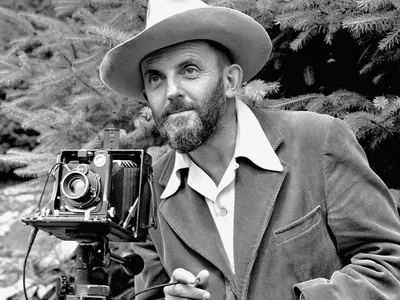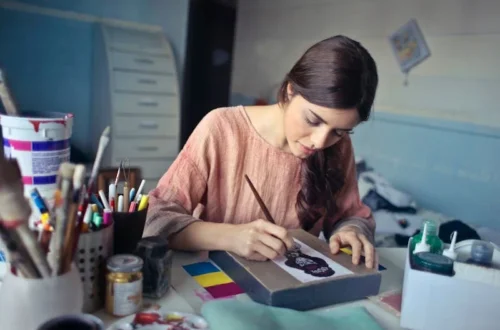
By: Rachel Knepp
Watercolor, a beloved medium, captures my heart with its translucent hues and fluid brushstrokes, allowing me to express emotions and explore the beauty of the world with every stroke.
Discover the captivating journey of watercolor through the annals of art history. In this blog post, we delve into the origins, evolution, and enduring charm of this mesmerizing painting technique. From its ancient roots to the Renaissance masters and modern innovations, join me as we explore the vibrant story of watercolors.
history of watercolor
Watercolor, with its origins dating back to ancient civilizations, has a rich history as a versatile and captivating artistic medium.
To find the oldest known use of watercolor we need to visit the prehistoric caves in the Vézére Valley with the most concentrated and best examples of cave art are a set of sites is in the Dordogne. In prehistoric cave paintings, early humans employed pigments mixed with water to create rudimentary watercolor-like art, showcasing their stories and connections to the natural world.


Watercolor has a fascinating historical trajectory spanning from prehistoric times and spread throughout the world and time and continues to be a favorite and highly regarded medium amongst artists and art enthusiasts.
Watercolor played a significant role in the artistic expression of ancient Egypt. The Egyptians utilized this versatile medium to create vibrant and visually captivating works of art. Watercolor pigments were derived from various natural sources, including minerals, plant extracts, and animal materials, which were mixed with water to form a liquid paint. These pigments were then applied to papyrus scrolls and tomb walls, allowing artists to depict scenes of everyday life, religious rituals, and mythological narratives. The colors produced with watercolor ranged from earthy tones to vivid hues, creating a sense of depth and dimension in the artwork. The delicate and intricate details achieved with watercolor techniques demonstrated the Egyptians’ mastery of the medium. The use of watercolor in ancient Egypt not only served as a means of artistic expression but also carried symbolic significance, preserving their culture and beliefs for generations to come.

Watercolor held a revered position in ancient Chinese culture, becoming a cherished medium for artistic expression. Employed in various forms, from landscapes to calligraphy and silk paintings, watercolor showcased the mastery and creativity of Chinese artists. Using finely ground pigments derived from minerals, plants, and even precious materials like gold, watercolor paintings achieved a harmonious balance of colors and delicate brushwork. The translucency of watercolor allowed artists to depict the ethereal beauty of nature, capturing mist-shrouded mountains, flowing rivers, and blossoming flowers with remarkable precision. The interplay of ink and watercolor on silk scrolls created a sense of fluidity and grace in Chinese art. Watercolor was not just a medium but a conduit for expressing philosophies, emotions, and capturing the essence of the natural world in a way that resonated deeply with Chinese culture.

During the Middle Ages, the watercolor medium found its place in the artistic endeavors of the time, particularly in the creation of illuminated manuscripts. Skilled monks and scribes utilized watercolor pigments to embellish the intricate pages of these manuscripts with vibrant and richly detailed illustrations. The luminosity and transparency of watercolor allowed for the depiction of intricate patterns, ornate borders, and vivid scenes from religious texts. These carefully crafted works showcased a harmonious combination of vibrant colors and delicate brushwork, illuminating the pages with a sense of divine beauty. The use of watercolor in illuminated manuscripts during the Middle Ages exemplified the meticulous craftsmanship of the era and played a vital role in preserving and sharing knowledge, history, and religious teachings.


During the Renaissance, watercolor art gained prominence as a favored medium among artists. It was valued for its delicate and translucent qualities, allowing painters to create luminous and ethereal effects. Artists like Albrecht Dürer and Hans Holbein the Younger utilized watercolor to depict intricate botanical studies, landscapes, and portraiture. Watercolor pigments were made from natural materials, such as minerals and plants, providing a wide range of hues and tones. This medium enabled artists to achieve a sense of light, atmosphere, and meticulous detail in their works, contributing to the flourishing of the Renaissance artistic movement. The use of watercolor during this period laid the foundation for its continued popularity and experimentation in the world of art.


In subsequent centuries, watercolor continued to evolve, gaining popularity among artists worldwide. It found a special place in the art of Romanticism, capturing the sublime beauty of nature, and later in Impressionism, with its emphasis on capturing light and atmosphere. Today, watercolor remains a favored medium, cherished for its transparent and spontaneous qualities. Artists employ it to create a wide range of subjects, from traditional landscapes and still lifes to abstract and experimental works. With the advent of new techniques and materials, artists continue to push the boundaries of watercolor, blending tradition with innovation, and showcasing its enduring allure in contemporary art.
tools
The historical development of watercolor brushes and tools has been instrumental in shaping the artistic possibilities of this captivating medium. In ancient times, brushes were crafted using natural materials like animal hair, plant fibers, or feathers, providing artists with a range of textures and effects. As civilizations advanced, brushmaking techniques evolved, with the introduction of metal ferrules and wooden handles. During the Renaissance, finer brushes with delicate bristles emerged, allowing for intricate details in watercolor paintings. In the 18th and 19th centuries, the production of synthetic brushes offered greater durability and precision. Alongside brushes, artists also relied on palettes, porcelain dishes, and water containers to manipulate the paint. Today, modern watercolor tools, including synthetic and hybrid brushes, innovative palettes, and absorbent papers, continue to enhance artists’ abilities to create stunning works. The evolution of watercolor brushes and tools mirrors the artistic journey, enabling artists to explore the medium’s potential and create captivating works of art.
paint
As I have discussed already, the development of watercolor paint has a rich and fascinating history that spans centuries. The ancient Egyptians used pigments mixed with water to create their vibrant watercolor-like artwork on papyrus. In ancient China, artists ground minerals, plants, and even precious stones to create pigments that could be mixed with water. During the Renaissance, watercolor gained popularity as a medium, with artists experimenting and refining techniques for creating their own paints. In the 18th and 19th centuries, the production of watercolor paints in pans and tubes became more widespread, making them more accessible to artists. Today, artists have a vast array of high-quality watercolor paints available, formulated with finely ground pigments and binders to achieve rich, transparent, and lightfast colors. The evolution of watercolor paint showcases the ongoing innovation and dedication to the medium, allowing artists to explore its expressive qualities and create stunning works of art.

My Love of Watercolor- a heartfelt poem
In strokes of fluid grace, my heart unfurls,
With watercolor’s touch, my spirit twirls.
A palette of hues, vibrant and alive,
In watery depths, my passions thrive.
Each brushstroke whispers tales untold,
A language of colors, stories unfold.
With every pigment and gentle stroke,
My soul dances, a whispered evoke.
Watercolor’s embrace, a world divine,
Where pigments blend, harmonies entwine.
A symphony of translucent dreams,
In watery realms, my heart redeems.
With every wash, a journey unfurls,
As an artist’s love for watercolor swirls.
A dance of hues, a timeless affair,
In watercolor’s realm, I find solace rare.

Amazon product link below. Please support the blog. Thanks so much for reading. Till next time.



